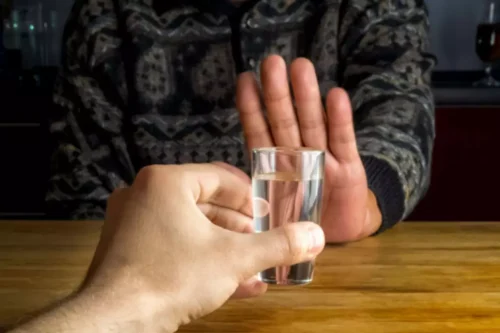Alcohol and diabetes: Effects, blood sugar levels, and guidelines

Alcohol impairs your liver’s ability to produce glucose, so be sure to know your blood glucose number before you drink an alcoholic beverage. One study found that women who drink moderately have a lower risk of developing type 2 diabetes than women who do not drink. The study had a number of limitations, however, which might alter the perception of impact.
Drinking with diabetes: What to keep in mind
Moreover, the lack of an alcohol effect on basal glucose uptake was observed in both perirenal and epididymal fat deposits [14]. These findings are consistent with the lack of an alcohol-induced change in the major transporter responsible for noninsulin-independent glucose transport in fat, GLUT1 [72]. With respect to the other major gluconeogenic substrates, alcohol acutely impairs the de novo synthesis of glucose from glycerol both in vivo [34,35] and in vitro [32,36] and from alanine in a dose-dependent manner [32,37]. In contrast, gluconeogenesis from pyruvate is unaltered or even elevated by acute alcohol [38,39]. These metabolic effects are a consequence of the oxidative metabolism of alcohol via alcohol dehydrogenase which increases the NADH/NAD+ ratio and thereby reduces the pyruvate/lactate ratio to inhibit hepatic gluconeogenesis [31,32,40]. Accordingly, pretreatment with a specific inhibitor of alcohol dehydrogenase, 4-methylpyrazole, prevents the alcohol-induced inhibition of gluconeogenesis [38].
- In recent years, semaglutide has gained significant attention as an effective treatment for weight management…
- If you have questions about taking Actos with insulins or sulfonylureas, talk with your doctor or pharmacist.
- Therefore, individuals on semaglutide should be cautious and monitor their blood sugar levels closely if they choose to consume alcohol.
Healthy Living e-Newsletter

Screened publications were then independently short-listed against study selection criteria by two authors, with one-third reviewed by all three authors. Differences of opinion were resolved via the input of the third reviewer, and the majority decision was upheld where a publication was reviewed by all three reviewers. The degree of agreement between reviewers was determined using the Cohen and Fleiss κ (21) statistics. Talk with your provider if you or someone you know with diabetes has an alcohol problem. ALWAYS consume alcohol with a meal or snack that contains carbohydrates. Alcohol can also affect diabetic nerve damage, eye disease, and high blood triglycerides.
- It deserves to be investigated more intensively in diabetogenic effects of chronic alcohol consumption.
- Cannabis(commonly called marijuana) and cannabis products, such as cannabidiol (CBD), have been specifically reported to interact with Actos.
- Several investigators have addressed the impact of alcohol on the development of T2DM, affected by altered levels of BDNF, which modulate the activity of neurotransmitters, enhance cellular growth, and participate in neuronal plasticity [47].
- The risk for low blood sugar remains for hours after you take your last drink.
- The assumption of stable temporal consumption is likely to be invalid, with disparate trajectories of alcohol consumption consistently identified regardless of the length of follow-up or the age of the cohort under study (64,65).
- When it is busy doing this, it does not release stored carbohydrates to maintain blood sugar, meaning that blood sugar levels can drop to dangerous levels.
ALCOHOL CONSUMPTION AND RISK OF T2DM

However, excessive alcohol consumption increases the risk of hypoglycemia (low blood sugar), hyperglycemia (high blood sugar), liver disease, and more. This may happen because your liver can’t maintain basal blood sugar levels while also metabolizing alcohol. This may lead to excessively low blood sugar — and even more so if you drink on an empty stomach (2).
Tips for Drinking Safely With Diabetes
Before heading out to a bar or restaurant where you plan to have a drink, put on your medical ID bracelet. This way, if an emergency arises, medical personnel (who are trained to look for IDs) will know you have diabetes. It may sound harsh, but it’s https://ecosoberhouse.com/ advice that any healthcare provider is likely to give. The important thing to understand, though, is that this presumed benefit is just a theory. There is no research to show a definite link between drinking red wine and improved diabetes management.
- Having identified significant differences in dose-response by both sex and referent group, sex-specific data from the five studies using a strictly defined never-drinking abstention category are reported in Supplementary Fig.
- This meta-analysis benefited from the addition of 18 studies published since 2008 or otherwise missed or discounted during previous meta-analyses.
- By modulating these pathways, semaglutide may help reduce cravings for alcohol and promote healthier drinking behaviors.
- All alcohol contains about 7 calories per gram, which is more than carbohydrates (4 calories per gram) and only slightly less than fat (9 calories per gram).
Food and Diabetes –

Alcohol is absorbed directly into the bloodstream from the stomach or the small intestine, carried through the body, and delivered to the liver. Drinking is individualized and there’s no universal diabetes and alcohol rule for how to do it safely when you live with diabetes. Talk to your doctor about your drinking habits and they can provide you with tips and tricks for how drink in a way that works for you.